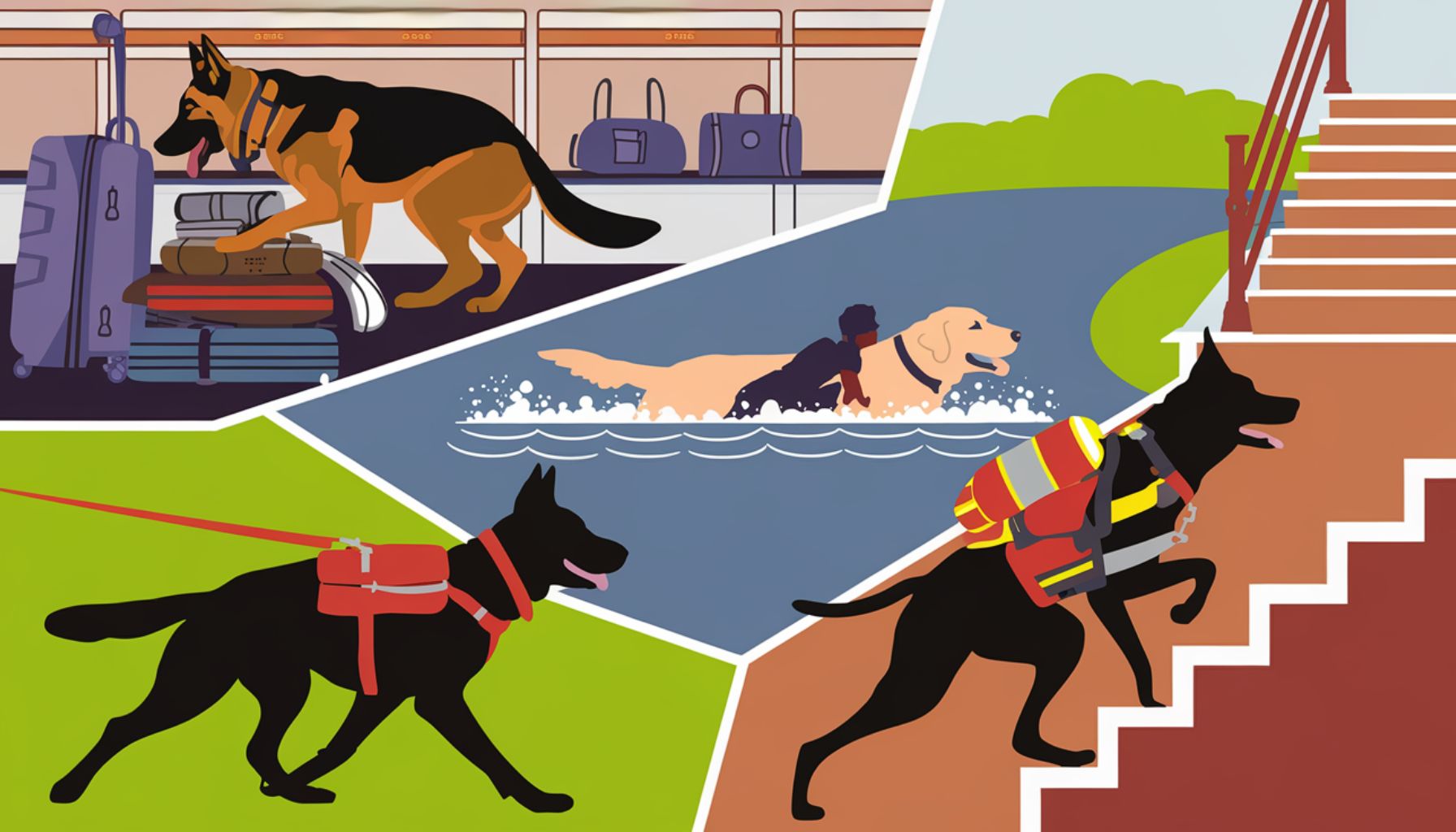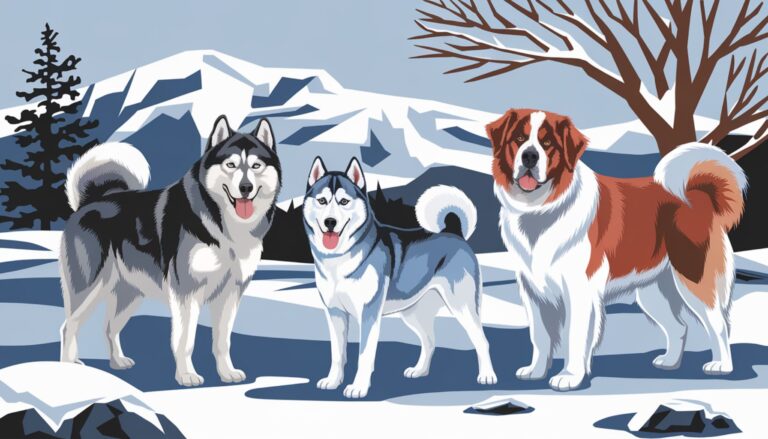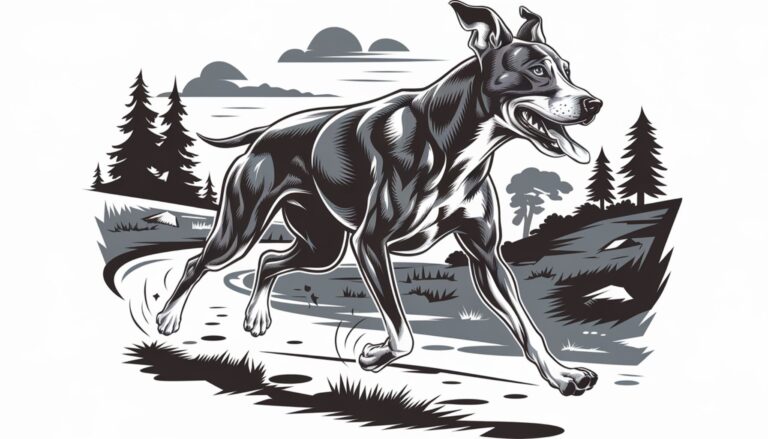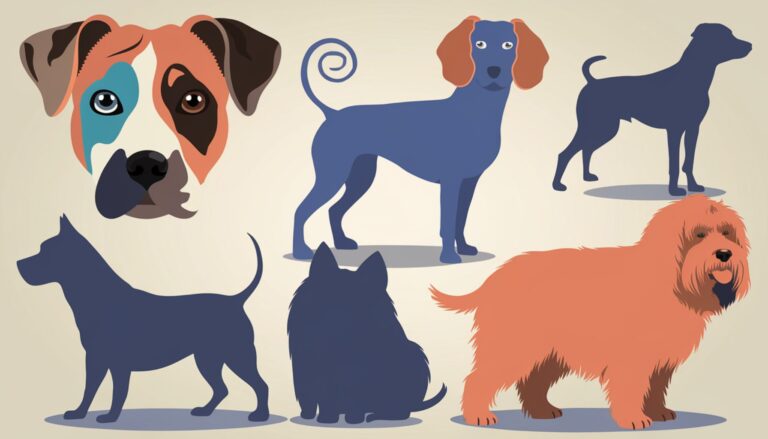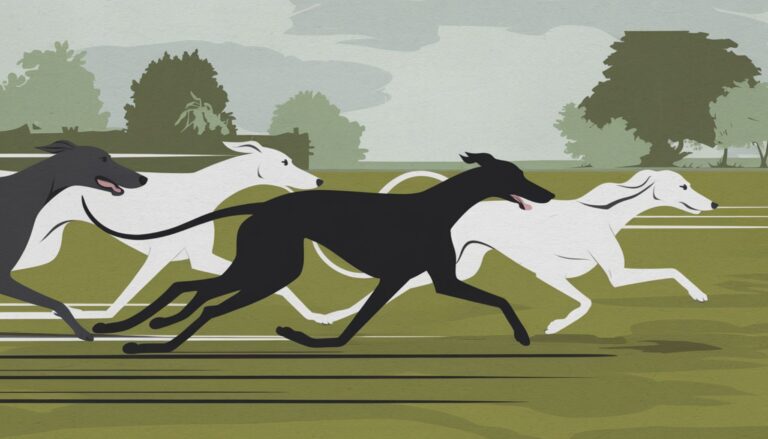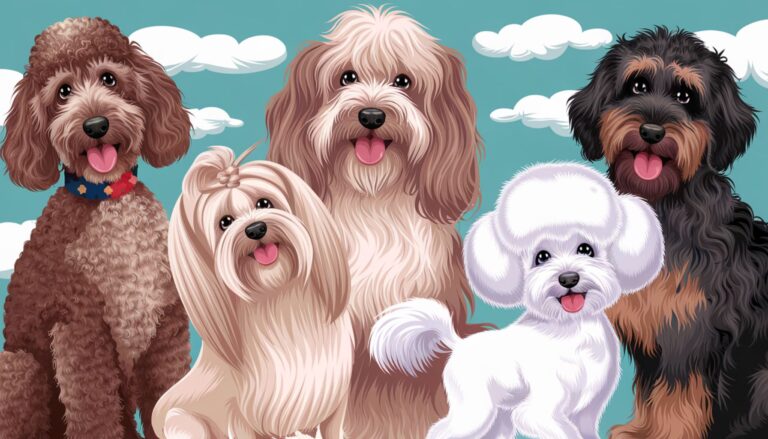Canine Professionals: Top 10 Working Dog Breeds
Some of our posts on woofwagnation.com contain affiliate links. If you click on an affiliate link and make a purchase, we may receive a commission. Clicking on an affiliate link that earns a commission does NOT result in additional charges or costs you extra. Earnings from affiliate links help keep this website running. See our full affiliate disclosure here.
Ever watched a police K-9 unit in action and thought, “Wow, that dog’s got a better job than I do”?
Working dog breeds are the overachievers of the canine world, the valedictorians of Doggy High, if you will. These aren’t your average tail-waggers we’re talking about – they’re out there earning their kibble like the pros they are.
From herding sheep to sniffing out bombs, these pooches have been our partners in crime (or rather, crime-fighting) for centuries. They’re the muscle, the brains, and sometimes the nose behind operations that keep our world turning.
But here’s the kicker – owning one of these canine superheroes isn’t all fetch and belly rubs. It’s more like adopting a furry personal trainer who’ll judge you for sleeping in past 6 AM.
So, whether you’re thinking of adding one of these workaholics to your family or just want to appreciate the doggos that make human jobs look easy, you’re in for a treat. These four-legged professionals might just leave you in awe or questioning your own career choices.
Maybe both.
Let’s get to know these exceptional breeds where the treats are earned, and the belly rubs are well-deserved.
Key Takeaways
- Jack of All Trades: These pups are like the Swiss Army knives of the dog world – versatile and always ready for action.
- Brainy Bunch: Working breeds are the Einsteins of the canine kingdom, with smarts that’ll make you feel like you need to up your game.
- Energizer Bunnies: These dogs have batteries that would make the Energizer Bunny jealous – they keep going, and going, and…
- Loyal to the Core: Stick with them, and they’ll stick with you like fur on a black sweater (but in a good way).
- Specialized Superstars: Each breed has its own superpower, from the German Shepherd’s nose to the Saint Bernard’s strength.
- High-Maintenance Hotshots: These pups need more than just kibble and cuddles – they’re the divas of the dog world when it comes to training and exercise.
- Exercise Enthusiasts: Couch potatoes need not apply – these dogs will have you running marathons before breakfast.
Top Working Dog Breeds
German Shepherd
Versatile and intelligent, excelling in police and military work.
Labrador Retriever
Friendly and adaptable, often used in search and rescue operations.
Belgian Malinois
Energetic and focused, popular in police and military operations.
Rottweiler
Strong and loyal, often employed in security and protection roles.
What Makes a Working Dog Breed?
Let’s talk about what puts the “work” in working dog breeds. These aren’t your typical slobber-and-snooze pooches. Nope, these are the canine equivalent of that overachiever in high school who was captain of every team, a straight-A student, and still had time to volunteer at the local shelter.
Working dog breeds are like the special forces of the dog world. They’re smart – we’re talking “solve-a-Rubik’s-cube-with-their-paws” smart. They’ve got more strength than your average gym rat, and their stamina? Let’s just say they could probably outrun your Fitbit.
These breeds have been fine-tuned over centuries to be the best at what they do. Whether it’s herding sheep, guarding property, or finding lost hikers, these dogs have got skills that would make any LinkedIn profile jealous.
But here’s the thing – with great power comes great responsibility (yes, I just quoted Spider-Man in a dog article, deal with it). These pups need a job to do, or they’ll find one themselves. And trust me, you don’t want a bored working dog redecorating your living room or herding your neighbor’s cats.
So, if you’re thinking of bringing one of these canine professionals into your life, be prepared. They’re not just pets; they’re partners.
They need training, exercise, and mental stimulation. It’s like having a furry, four-legged personal trainer/life coach who’ll judge you for sleeping in.
But for the right person? The rewards are as big as their hearts.
| Statistic | Value | Notes | Source |
|---|---|---|---|
| Cost of training | $150,000 | Approximate cost for training a military working dog | [5] |
| Detection accuracy | 98% | Accuracy rate in detecting bombs and drugs | [5] |
| Career span | 9-11 years | Average career span for a military working dog | [5] |
| Adoption rates | Over 90% | Percentage of retired Military Working Dogs adopted by former handlers | [5] |
| Combat injuries | Over 4,000 | Number of MWDs that suffered injuries in combat over the past two decades | [6] |
| Active-duty MWDs | 1,800+ | Number of active-duty MWDs across the globe | [6] |
| Department distribution | DHS: 2,943 DoD: 1,808 |
Number of working dogs employed by major departments | [7] |
| Explosives detection programs | 26 | Number of government programs using dogs to identify explosives, radiological materials, and nuclear weapons | [7] |
| Health and welfare policies | 32 out of 40 | Number of federally managed working dog programs with comprehensive health and welfare policies | [7] |
| Service dog impact | 92% reduction in medication 82% reduction in suicide ideation |
Impact reported by Veteran graduates from the K9s For Warriors program | [1] |
Top 10 Working Dog Breeds
Working dog breeds stand out as the overachievers of the canine world, excelling in roles that showcase their intelligence, strength, and dedication. These breeds have been carefully developed over generations to perform specific tasks, from herding livestock to assisting in search and rescue operations.
Their versatility and work ethic often make them the go-to choices for demanding jobs that require a combination of physical prowess and mental acuity. While they excel in their working roles, many of these breeds also make loyal and loving companions, provided their needs for exercise and mental stimulation are met.
The following breeds represent some of the most capable and respected working dogs, each bringing unique qualities to their roles in service and companionship.
1. German Shepherd
Meet the Jack Bauer of the dog world. German Shepherds are the do-it-all superstars of working breeds. Originally bred for herding (surprise, surprise), these pups have since branched out into everything from police work to search and rescue. They’re like the overachieving kid in school who’s good at every subject and still finds time to be the class president.
With a nose that could put bloodhounds to shame and a brain that could probably solve complex equations (if only they had opposable thumbs), German Shepherds are the go-to dogs for any job that requires smarts, strength, and a dash of intimidation. Just don’t expect them to be couch potatoes. These pups have more energy than a toddler on a sugar high.
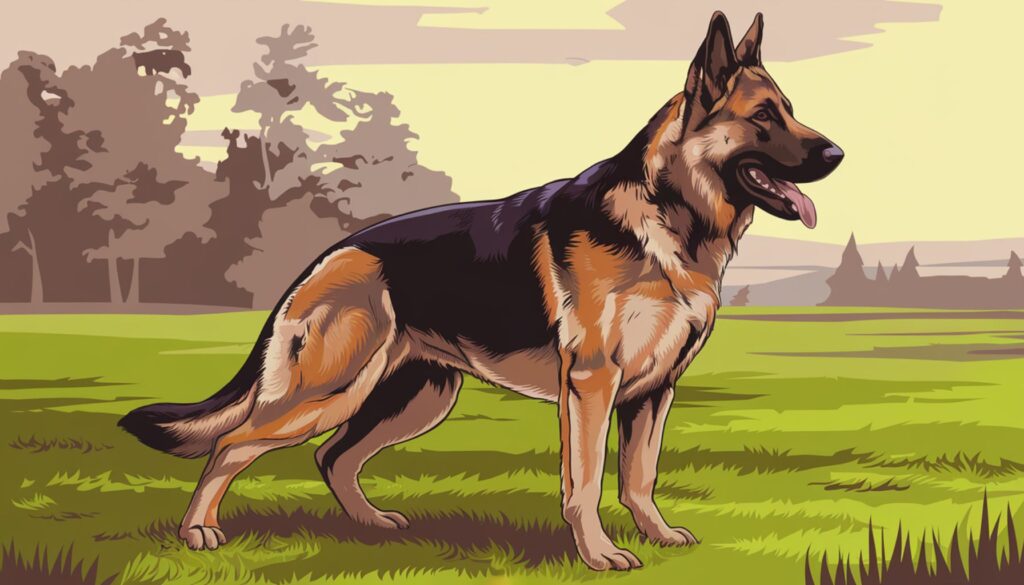
2. Labrador Retriever
Ah, the Lab – the golden child of the dog world (even when they’re not actually golden). These happy-go-lucky pooches might seem like they’re all about fun and games, but don’t let that fool you. Beneath that goofy grin and wagging tail lies the heart of a true working dog.
Labs excel in roles from guide dogs to search and rescue, and they do it all with a smile that could melt the coldest heart. Their secret weapon? A nose that could probably sniff out a single Cheerio in a football field. Plus, they’ve got a gentle nature that makes them perfect for therapy work. It’s like having a furry therapist who also doubles as your best friend.
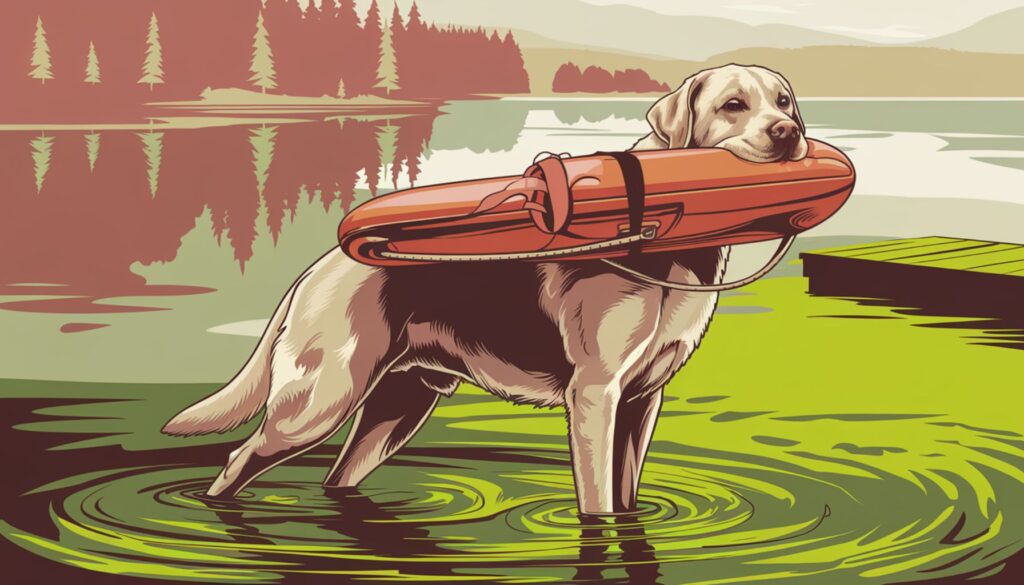
3. Belgian Malinois
Picture a German Shepherd, now give it a double shot of espresso. That’s a Belgian Malinois for you. These dogs are like the energy drinks of the canine world, always ready to go, go, go! They’re the favorites of police and military units worldwide, thanks to their combination of intelligence, agility, and a work ethic that would make your boss jealous.
But owning a Malinois isn’t for the faint of heart. They need more exercise than a CrossFit junkie and mental stimulation that would challenge a chess grandmaster. If you’re not prepared to dedicate a significant portion of your life to keeping this dog busy, you might find your house redecorated… and not in a good way.
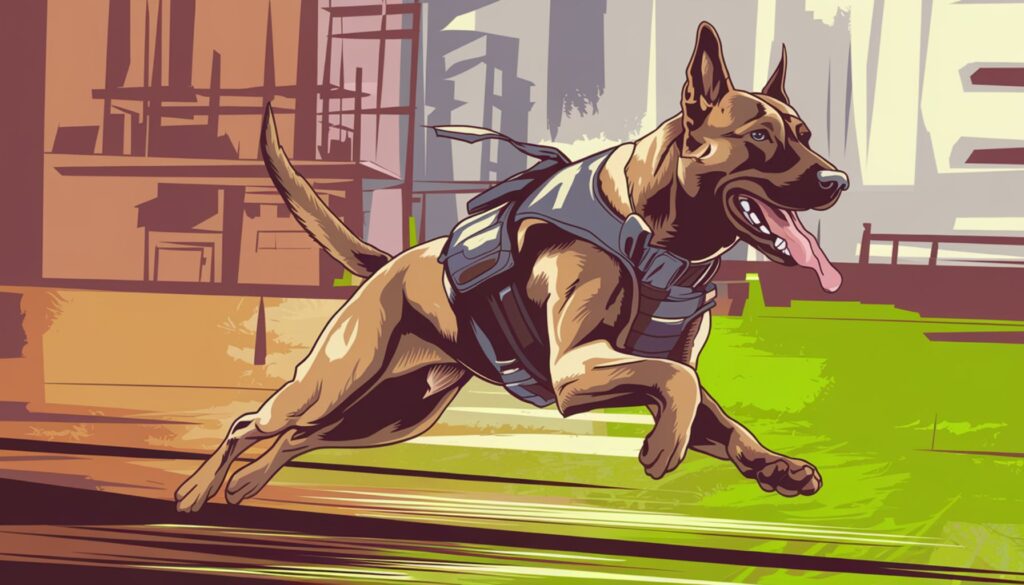
4. Rottweiler
Don’t let those puppy dog eyes fool you. Rottweilers are the bouncers of the dog world. These beefy boys (and girls) were originally bred to drive cattle and pull carts, which explains why they look like they could benchpress a small car.
Today, Rotties serve as police dogs, therapy animals, and all-around awesome companions. They’re like that big, tough-looking guy at the gym who turns out to be a total softie. Just be prepared for some drool – these dogs don’t believe in dainty eating habits.
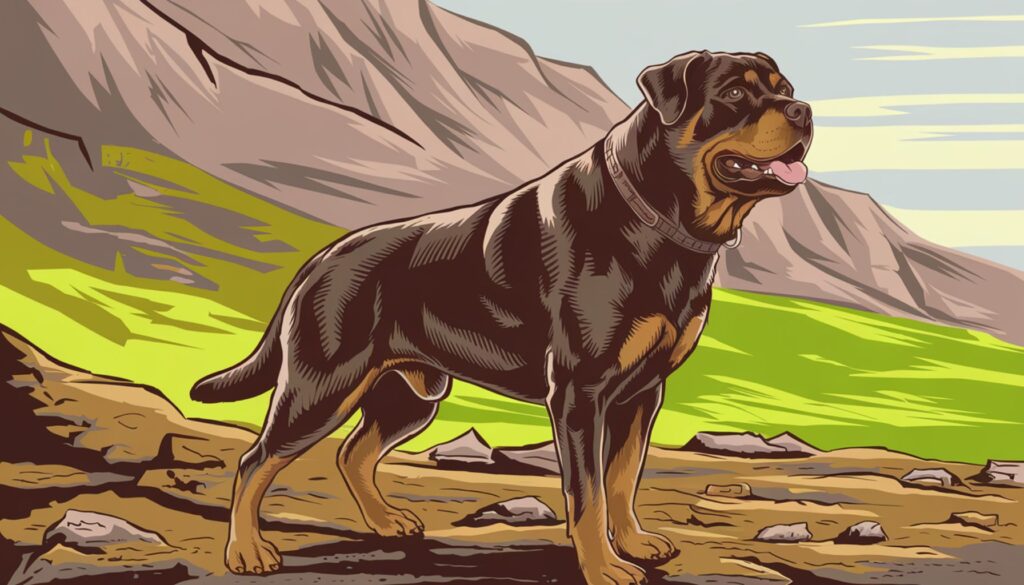
5. Doberman Pinscher
Dobermans are the James Bonds of the dog world – sleek, sophisticated, and always ready for action. Originally bred as personal protection dogs, these pups have a natural talent for looking intimidating while secretly plotting how to steal your heart (and maybe your dinner).
With their intelligence and agility, Dobermans excel in police and military work. They’re also known for their loyalty – stick with a Doberman, and you’ll have a friend for life. Just don’t expect them to be low-maintenance – these dogs need plenty of exercise and mental stimulation to keep them from turning your living room into their personal obstacle course.
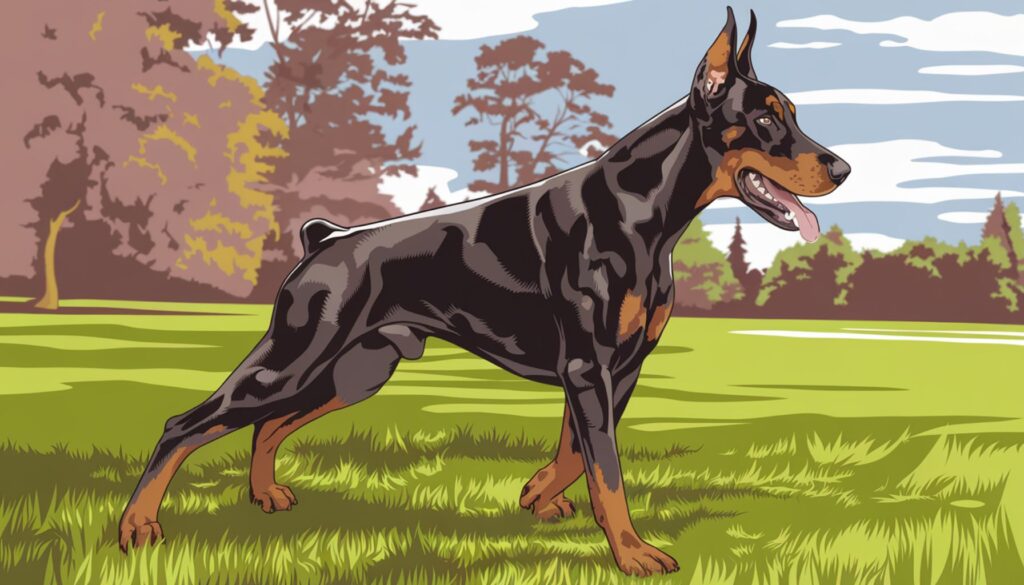
6. Siberian Husky
Ah, the Siberian Husky – the drama queens of the working dog world. These stunning dogs were bred for pulling sleds across frozen wastelands, which might explain their tendency to turn your backyard into the Iditarod every chance they get.
Huskies are known for their endurance, friendly personalities, and voices that could rival an opera singer. They’re also escape artists extraordinaire – if Houdini had been a dog, he’d have been a Husky. If you’re thinking of getting one, invest in a good fence and maybe a GPS tracker. Oh, and prepare for enough shed fur to knit a sweater. Or ten.
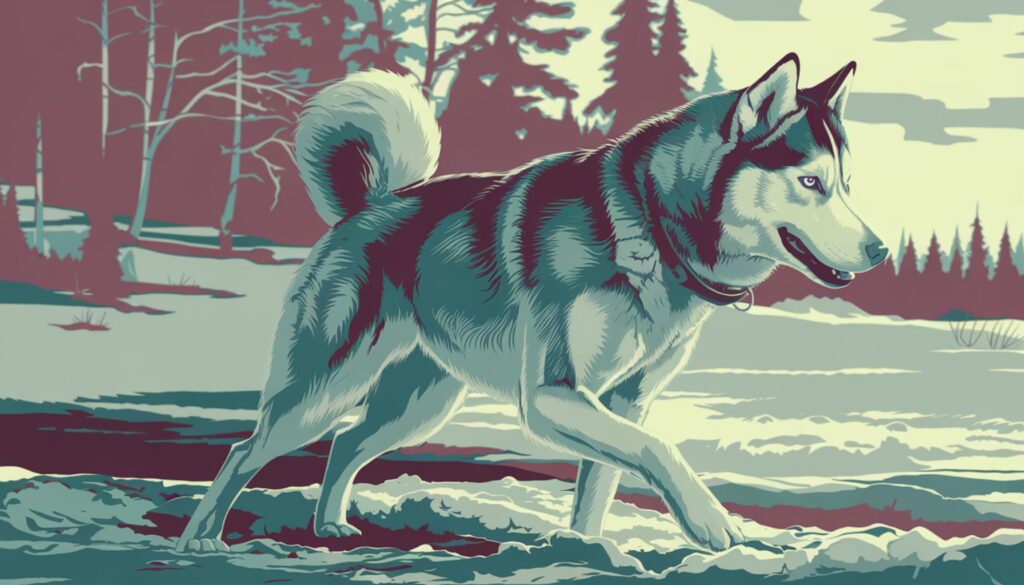
7. Bernese Mountain Dog
Imagine a bear and a teddy bear had a baby – that’s pretty much a Bernese Mountain Dog. These gentle giants were originally bred for farm work in Switzerland, which explains their strength and their ability to look majestic while covered in mud.
Bernese Mountain Dogs excel in carting and drafting work, but they’re also known for being excellent therapy dogs. They’re like living, breathing comfort blankets – if comfort blankets weighed 100 pounds and left fur on everything. Just be prepared for a short lifespan and potential health issues – breeding dogs to be this awesome unfortunately comes with some drawbacks.
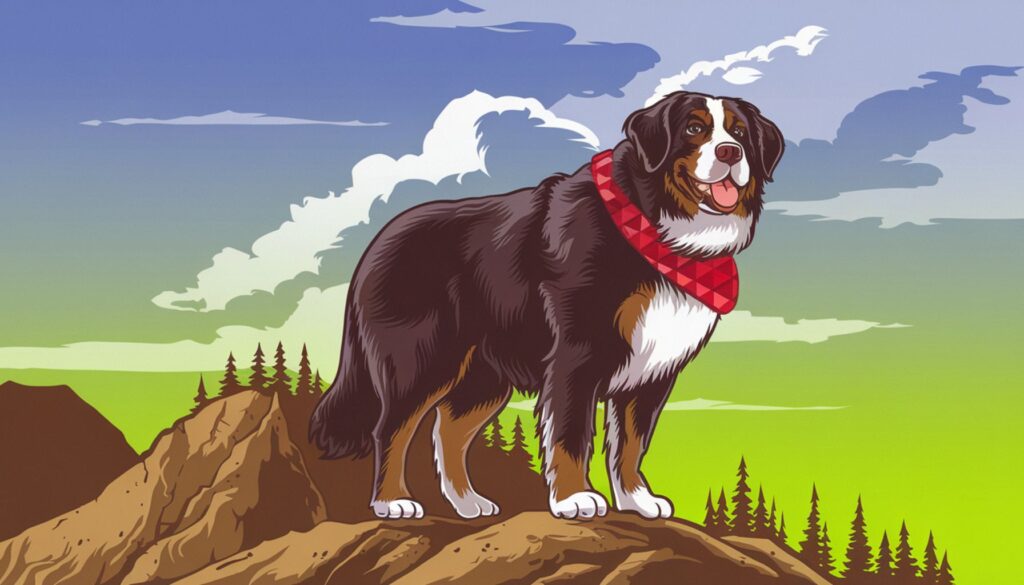
8. Great Dane
Great Danes are living proof that sometimes, bigger is better. These gentle giants were originally bred for hunting large game, but these days they’re more likely to be found lounging on your couch – taking up the entire thing, of course.
Despite their size, Great Danes are known for being patient and gentle, making them excellent therapy dogs. They’re also natural guardians – after all, who’s going to mess with a dog the size of a small horse? Just be prepared for some interesting walks – owning a Great Dane is like taking a pony for a stroll through the neighborhood.
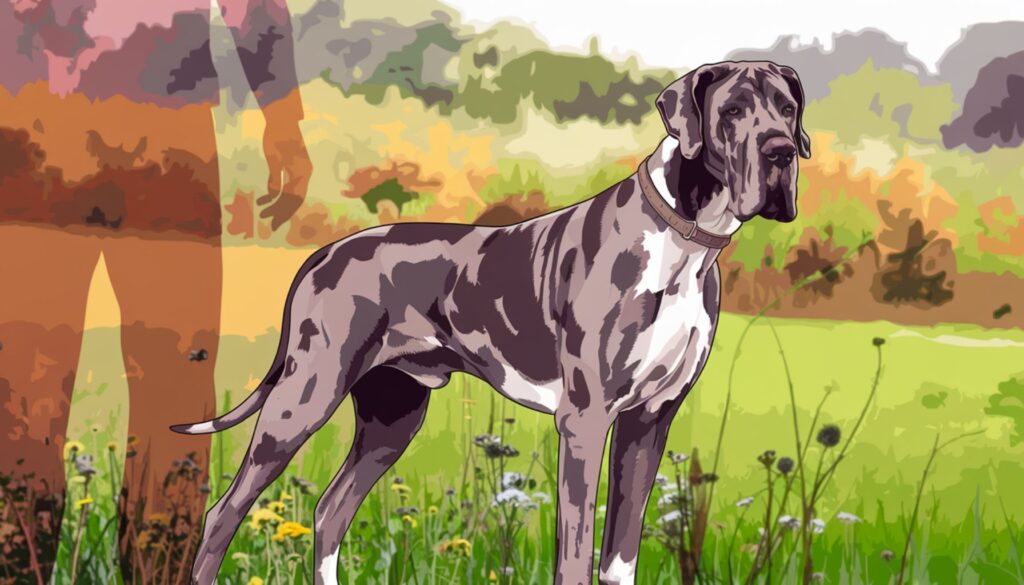
9. Newfoundland
If you’ve ever wanted a dog that’s part teddy bear, part fish, the Newfoundland is for you. These water-loving giants were bred for water rescue, which explains their webbed feet and waterproof coats. They’re basically the canine version of Baywatch, minus the slow-motion running.
Newfoundlands are known for their gentle nature and patience, making them excellent family dogs. They’re also fantastic swimmers – if you’ve got a pool, you might find your Newfie doing laps before breakfast. Just be prepared for the drool – these dogs don’t believe in keeping their emotions (or their saliva) in check.
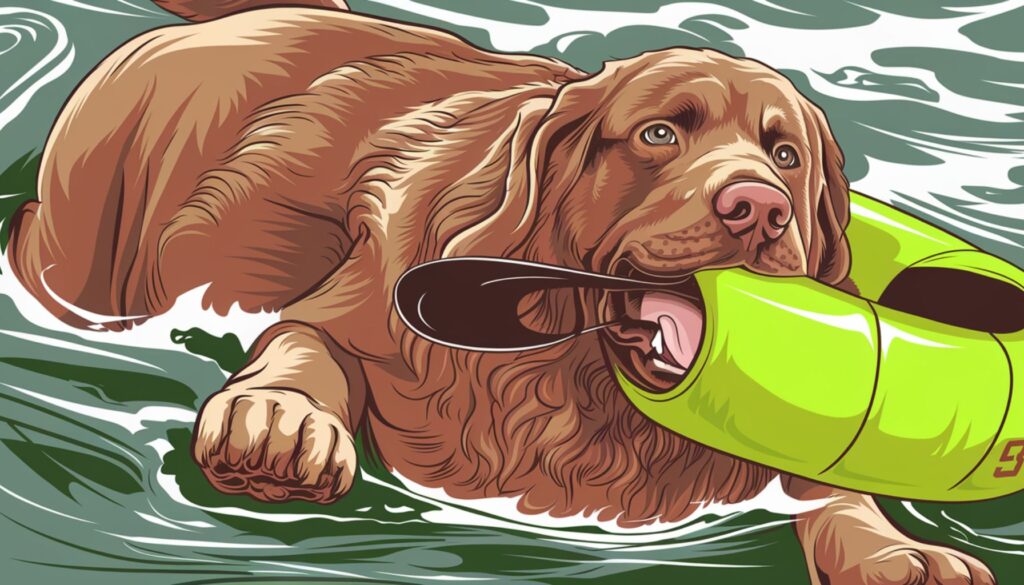
10. Saint Bernard
Last but certainly not least (especially in terms of size), we have the Saint Bernard. These massive mountain dogs were originally bred by Swiss monks for Alpine rescue work, which explains their tolerance for cold and their ability to sniff out humans buried in snow.
Today, Saint Bernards are more likely to be found rescuing you from a bad day with their gentle, patient nature. They’re excellent therapy dogs and great with kids – just be prepared for some serious slobber. Oh, and despite what cartoons might have told you, they don’t actually carry barrels of brandy around their necks. Sorry to burst that bubble!
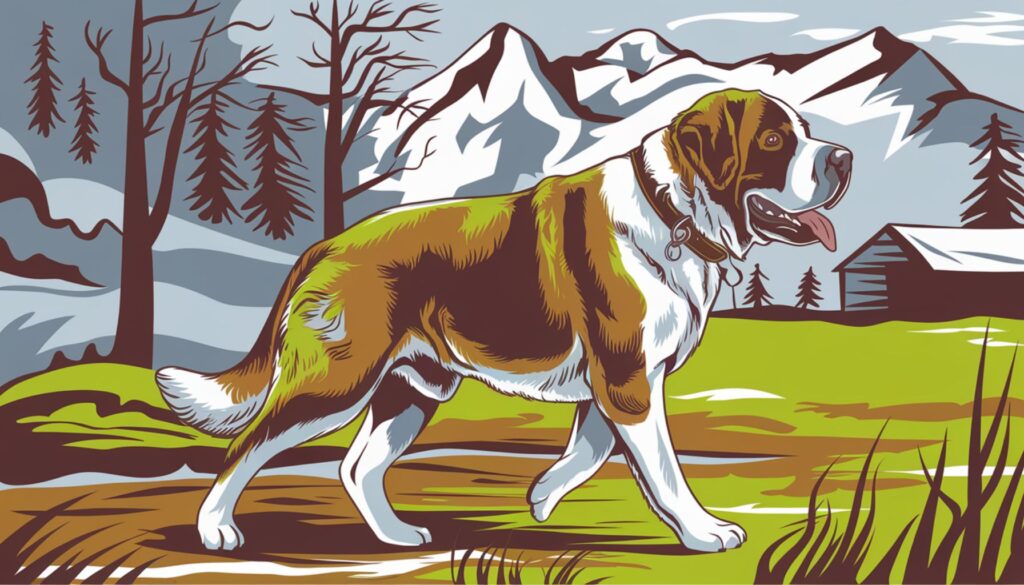
Training and Care for Working Dog Breeds
Bringing one of these canine overachievers into your life is like adopting a furry tornado – exciting, but potentially destructive if not properly managed.
First things first – training. Working breeds are smart, which is both a blessing and a curse. On one hand, they’ll pick up commands faster than you can say “sit.” On the other hand, they’ll also figure out how to open the fridge, raid the trash, and probably file your taxes if you’re not careful. Consistency is key – these dogs need clear rules and boundaries, or they’ll make up their own (and trust me, you won’t like their version).
Exercise is crucial for these high-energy pups. A bored working dog is a destructive working dog. We’re talking long walks, runs, and fetch sessions that’ll have your arm feeling like it might fall off – basically, if you weren’t a fitness enthusiast before, you will be now. Think of it as getting a personal trainer and a dog all in one furry package.
Mental stimulation is just as important as physical exercise. Puzzle toys, training sessions, even “jobs” around the house can help keep that big brain busy. Yes, you might feel a bit silly asking your dog to “help” with the laundry, but it’s better than coming home to find they’ve redecorated your living room with the contents of your sock drawer.
Health-wise, working breeds can have some specific issues to watch out for. Regular vet check-ups are a must, and be prepared for potential breed-specific problems. For example, large breeds like Saint Bernards and Great Danes can be prone to joint issues, while high-energy breeds like Belgian Malinois might be more susceptible to injuries from their enthusiasm for life.
Remember, owning a working breed is a commitment. These dogs aren’t just pets; they’re partners. They need guidance, structure, and plenty of love. But for the right person? The rewards are immeasurable. Just be prepared for your dog to be better at their job than you are at yours. It’s a little humbling, but hey, at least someone in the family is living up to their full potential, right?
| Statistic | Value | Notes | Source |
|---|---|---|---|
| Combat injuries | Over 4,000 | Number of MWDs that suffered injuries in combat over the past two decades | [4] |
| Career span | 9-11 years | Average career span for a military working dog | [4] |
| Vietnam War MWDs | ~4,000 left behind | Estimated number of MWDs left in Vietnam at the end of the war | [4] |
| MWD adoption rate | Over 90% | Percentage of retired MWDs adopted by former handlers after “Robby’s Law” in 2000 | [4] |
| Department distribution | DHS: 2,943 DoD: 1,808 |
Number of working dogs employed by major departments | [1] |
| Explosives detection programs | 26 | Number of government programs using dogs to identify explosives, radiological materials, and nuclear weapons | [1] |
| Health and welfare policies | 32 out of 40 | Number of federally managed working dog programs with comprehensive health and welfare policies | [1] |
| K9s For Warriors impact | 92% reduction in medication 82% reduction in suicide ideation |
Impact reported by Veteran graduates from the K9s For Warriors program | [4] |
| FEMA dog breeds | Labradors, German Shepherds, Golden Retrievers, Belgian Malinois, Border Collies | Common breeds used by FEMA to locate disaster survivors and human remains | [1] |
| Active-duty MWDs | 1,800+ | Number of active-duty Military Working Dogs across the globe | [4] |
Working Dogs in Modern Society
So, you thought working dogs were all about herding sheep and pulling sleds? These days, working breeds are the multi-taskers of the canine world, taking on jobs that would make even the most ambitious human’s head spin.
In law enforcement, working dogs are like the furry superheroes of the force. From sniffing out drugs to chasing down bad guys, these pups are living their best lives while making the world a safer place. And let’s be honest, they look way cooler in a K-9 unit vest than any human ever could.
Military operations?
Yep, dogs are there too. These four-legged soldiers do everything from detecting explosives to providing emotional support for troops. They’re basically the Swiss Army knives of the military world, but fluffier.
But it’s not all action and adventure. Working dogs are also making waves in the medical field. From guide dogs for the visually impaired to seizure-alert dogs, these pups are proving that you don’t need a medical degree to save lives. Some dogs can even detect certain types of cancer – talk about putting your human doctor to shame!
Therapy and emotional support roles are another area where working dogs excel. Whether it’s providing comfort in hospitals, schools, or disaster areas, these dogs are like living, breathing stress balls. Only instead of squeezing them, you pet them. And they pet you back with their eyes.
Working dogs are becoming the unsung heroes of wildlife protection. From tracking endangered species to sniffing out invasive plants, these eco-warriors are proving that saving the planet is a job for all species.
Looking to the future, the potential roles for working dogs seem limitless. With advances in training techniques and our understanding of canine capabilities, who knows what jobs dogs might be doing in a few years? Computer programming? Probably not, but I wouldn’t put it past them to try.
The bottom line is that working dogs are adapting to our changing world just as much as we are. They’re proving that old dogs (breeds, that is) can indeed learn new tricks.
The next time you see a dog in a vest, remember – that pup probably has a more interesting job than most of us humans!
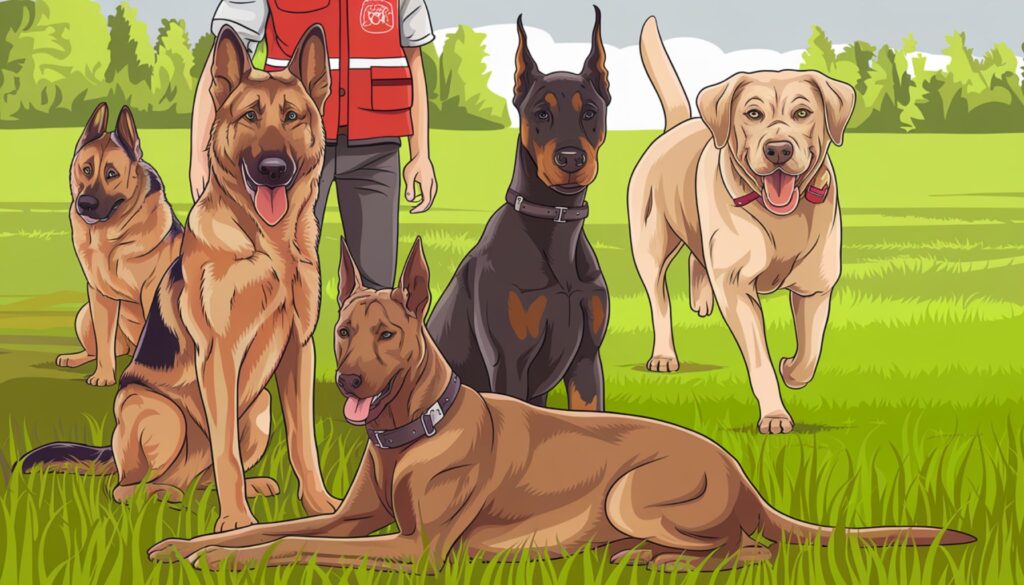
Choosing a Working Dog Breed as a Pet
So, you’ve watched all the cool working dog videos on YouTube and now you’re thinking, “Hey, I could totally handle one of those super-pups!” Well, slow your roll there, Cesar Millan. Owning a working breed isn’t just a walk in the park – it’s more like a marathon through an obstacle course… every single day.
First things first – lifestyle compatibility. If your idea of exercise is walking to the fridge for another slice of pizza, you might want to reconsider. These dogs have more energy than a toddler on a sugar high. They need regular, intense exercise. And by regular, I mean daily. And by intense, I mean you might want to invest in some running shoes and maybe a bike. Or a treadmill. Or all of the above.
Training?
Oh boy, buckle up. Working breeds are smart – like, “figure out how to open the treat jar” smart. This means they’ll pick up commands quickly, but it also means they’ll get bored just as fast. You’ll need to be consistent, patient, and creative in your training. It’s like having a furry toddler who never grows up and can outrun you.
Space is another consideration. Many working breeds are, well, not small. They need room to move, play, and possibly practice their herding skills (hope you don’t mind being herded to the dinner table). A studio apartment might work for a Chihuahua, but for a Newfoundland? Not so much.
Socialization is crucial for these breeds. Many of them have strong guarding instincts, which is great if you’re worried about burglars, not so great if you want to have friends over without them being treated like potential threats. Early and ongoing socialization can help your working dog understand that not everyone is a sheep to be herded or a bad guy to be apprehended.
Grooming can be… interesting.
Some working breeds, like Huskies, shed enough to create a whole new dog every week. Others, like Poodles, need regular professional grooming. Either way, be prepared for your vacuum cleaner to become your new best friend.
But here’s the thing, for all the challenges, owning a working breed can be incredibly rewarding. These dogs are loyal, intelligent, and capable of forming deep bonds with their humans. They excel at dog sports, make excellent running or hiking buddies, and will always keep life interesting.
Just remember – a working dog is a partner, not just a pet. They need a job, even if that job is just being your workout buddy or personal security detail. If you can provide the exercise, training, and mental stimulation these breeds need, you’ll have a friend for life.
Just don’t be surprised if your dog ends up being better at their “job” than you are at yours. It’s a little humbling, but hey, at least someone in the family is living up to their full potential, right?
Product Recommendations
Working dog breeds are the overachievers of the canine world, and they need gear that can keep up with their energy and intelligence. These products are specially chosen to challenge your dog’s mind, provide outlets for their boundless energy, and help with training these canine Einsteins.
From indestructible toys to high-tech trackers, these recommendations focus on durability, mental stimulation, and practical support for managing your furry workaholic. They’re designed to keep your working dog engaged, well-behaved, and maybe even tired enough for a nap (but don’t hold your breath on that last one).
- Kong Extreme Dog Toy: This isn’t your average chew toy, folks. This is the Chuck Norris of dog toys – practically indestructible and ready for anything. Perfect for those times when your working breed decides to channel their inner wolf and destroy everything in sight. Bonus: stuff it with treats and watch your genius pup spend hours trying to get them out. It’s like a doggy Rubik’s cube, but tastier.
- Onetigris Tactical Service Dog Vest: Because if your dog is going to work, they might as well look the part, right? This vest is like a Swiss Army knife for dogs – all the pockets, all the patches, all the cool factor. Plus, it’s great for training and gives your pup a sense of purpose. Just try not to get jealous when your dog looks cooler than you do.
- Outward Hound Nina Ottosson Dog Worker: For those big brains that need constant stimulation, this puzzle toy is a lifesaver. It’s like a puzzle box for pooches, guaranteed to keep them entertained for at least… oh, 10 minutes. Hey, that’s 10 minutes of peace and quiet for you!
- Whistle Go Explore GPS Pet Tracker: For you overachieving dog parents who want to track every sniff and step, this gadget is a game-changer. It’s like a Fitbit for Fido, letting you know if they’re getting enough exercise (spoiler alert: with working breeds, the answer is always “not enough”). Plus, it has GPS tracking for those escape artist Huskies out there. Because sometimes, “sit” and “stay” translate to “run for the hills” in dog language.
- Tuff Mutt Hands-Free Dog Leash: Because let’s face it, when you’re out running with your working breed, you need all the help you can get. This leash attaches around your waist, leaving your hands free for important things like wiping sweat off your brow and wondering why you thought this was a good idea.
These products address common needs for working dog owners, such as durability, mental stimulation, physical exercise, and training support. They’re designed to enhance the living experience for both you and your canine colleague, helping to prevent boredom, destructive behavior, and the feeling that you’re always one step behind your four-legged genius.
Further Reading
Still hungry for more working dog wisdom? Don’t worry, we’ve got you covered. Here’s a smorgasbord of articles to feed that curiosity of yours:
- Dog Training Techniques: Because “sit” and “stay” are just the beginning. This guide will help you turn your working breed from a furry tornado into a well-behaved… slightly smaller furry tornado.
- 10 Smartest Dog Breeds: Spoiler alert: your working breed probably made the list. Read this and feel simultaneously proud and slightly intimidated by your dog’s intelligence.
- 7 Active Dog Breeds: Or as working dog owners call it, “Tuesday.” This article might make you feel better about your dog’s endless energy… or make you want to take a nap.
- 10 Guard Dog Breeds: For when you want a security system that also drools and steals your socks.
- Dog Nutrition and Diet: Because fueling your canine athlete is a bit more complicated than just tossing them table scraps. Unless you want a very energetic, very sick dog.
These articles are like a buffet for your brain, serving up extra helpings of working dog knowledge. They’ll help you understand everything from your dog’s Einstein-level smarts to their marathon-runner energy levels. Plus, they might just give you some ideas on how to keep your furry workaholic happy, healthy, and out of trouble.
Well, mostly out of trouble. Let’s be realistic here.
Working Dog Breeds Quiz
Frequently Asked Questions About Working Dog Breeds
Q: What exactly defines a working dog breed?
A: Think of working dogs as the overachievers of the canine world. They're the pups with a purpose, bred for specific jobs like herding, guarding, or rescuing. Basically, if a dog has a LinkedIn profile, it's probably a working breed.
Q: Are working dog breeds good family pets?
A: They can be fantastic family pets... if your family enjoys marathon running, puzzle-solving, and never-ending games of fetch. These dogs are loving and loyal, but they're not couch potatoes. They're more like furry personal trainers who'll judge you for sleeping in.
Q: How much exercise do working dog breeds need?
A: How long is a piece of string? Jokes aside, most working breeds need at least an hour or two of intense exercise daily. And by intense, I mean more than a leisurely stroll around the block. Think runs, swims, hikes, or a part-time job as a sled dog.
Q: Are working dogs harder to train than other breeds?
A: Not harder, just... different. These pups are usually super smart and pick up commands quickly. The tricky part? Keeping them interested. Training a working dog is like trying to teach calculus to a genius who'd rather be playing video games.
Q: Can working dogs live in apartments?
A: Can they? Sure. Should they? Well, that depends.
If you're willing to turn your living room into an agility course and spend every waking moment exercising your dog, then maybe. But generally, these breeds do better with some yard space. Unless you want your Newfoundland using your bathtub as a personal swimming pool.
Final Thoughts
We've taken quite the romp through the world of working dog breeds. From the brainy Border Collie to the brawny Bernese Mountain Dog, these canine professionals have shown us that they're more than just a pretty face (or a wet nose).
Working breeds are the Swiss Army knives of the dog world - versatile, reliable, and always ready for action. They're the pups that make other dogs look like they're stuck in the 9-to-5 grind while they're out there living their best lives, saving the world one task at a time.
But let's be real for a second.
Owning a working breed isn't all fetch and belly rubs. It's a commitment - kind of like deciding to run a marathon, but the marathon lasts for 10-15 years and sometimes chews on your furniture. These dogs need exercise, mental stimulation, and a job to do, even if that job is just being your personal alarm clock at 5 AM every day.
For the right person, though?
A working breed can be an incredible companion. They'll push you to be more active, challenge you to be smarter (because let's face it, sometimes they'll outsmart you), and show you levels of loyalty that'll make your human relationships look flaky in comparison.
Woof Wag Nation is here to support you on this journey, whether you're a seasoned working dog owner or just dipping your toes into the world of canine professionals. We've got the resources, the know-how, and probably a few war stories about the time a Border Collie outsmarted us all.
Share Your Working Dog Stories
It's your turn to shine!
Have you got a German Shepherd who thinks he's a lap dog?
A Husky who's appointed herself the neighborhood watch?
Or maybe a Saint Bernard who's convinced he's a master escape artist?
We want to hear all about it!
Drop your stories in the comments below.
Share your triumphs, your challenges, and those moments when your working dog made you question who's really in charge (spoiler alert: it's probably the dog).
Your experiences aren't just entertaining (though we bet they are). They're valuable insights for others considering bringing a working breed into their lives.
Plus, let's be honest, it's a great chance to brag about your fur baby.
So, come on, spill the kibble!
Your fellow dog lovers are all ears (and wet noses).

About the Author: Cal Hewitt
Cal Hewitt is a seasoned content creator specializing in dog training and grooming. With years of experience writing for top dog service sites and a deep understanding of the challenges pet owners face, Cal delivers practical, research-backed advice to help you build a better relationship with your furry friend. From behavior tips to grooming guides, his articles aim to provide real solutions to common problems. Want to learn more about Cal and his approach to helping dog owners? Check out his full bio below.

